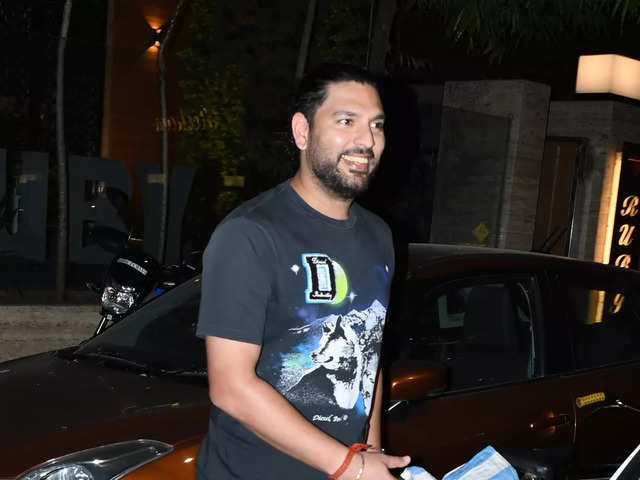
Representative image
The Creator Economy refers to all the players that operate in and around the value that is created by creators
Feb 16, 2022, 10:00 IST
brands
India’s power to establish itself as the hub of the creator economy
Feb 16, 2022, 10:00 IST
The Creator Economy refers to all the players that operate in and around the value that is created by creators
- When it comes to India, we are known for our diversity in culture, religion, but most importantly, language. This is, both good and bad for the growth of
creator economy . Rohit Agarwala, Founder, Barely Opinionated and Azaan Feroz Sait, Founder, The Hub Bengaluru discuss why. - They also predict what the future going to look like as we move closer and closer to the metaverse.
The Beginning
The process of creating content has existed for centuries. Whether it's painting, writing, poetry, music, cinema, they are all different ways of creating content. But the words ‘Creator Economy’ did not formalize until 2016, when user generated content (UGC) came to the forefront on the internet. Thus immense opportunities began emerging for those creating content.
The Creator Economy basically refers to all the players that operate in and around the value that is created by creators. This includes social media, blogs, and video content - by creating original content or repurposing it. It soon began to include software products and tools designed to enable these content creators.
Let us specifically take a look at the rise of the creator economy in India, and how India could dominate this sector.
India’s Dominance
To understand this, we need to go back to September 2016, when Jio launched in India, and started providing free internet. Jio disrupted the telecom industry with its prices, even pushing Vodafone and Idea to almost bankruptcy.
The entry of Jio did not only lead to an increase in the number of internet users, but it also led to an increase in the amount of internet being consumed and distributed by the existing users. To give you an estimate, Indians went from consuming an average 700 MB per month, to 11GB per month, which is a rise of over 1500%! Between 2016 and 2019, there was an approximate rise by over 90% on the number of internet users. The current number stands at over 840 Million users. With a total population of almost 1.38 Billion Indians, there’s still a lot of room for growth.
This rise in internet usage is also very well documented by the take-over of Indian channels in the YouTube space. Currently, there are 3 mega channels in the top 10 most subscribed channels in the world, with T Series on the top, with over 200 Million subscribers.
Now the thing is…
For a content creator to do well, they need social currency - which essentially boils down to the number of people that care about them on the internet, represented by the number of followers or subscribers.
India has the 2nd largest population in the world, but its internet penetration is approximately 61%. Now the US has a population of 346 Million, but with an internet penetration of 90%, at 313 Million. This means that there are a lot more Indians who are yet to get on the internet. Thus, as the number of internet users increase, creators will have a bigger market to gain followers / subscribers. This is where the value of the Indian population comes, and international creators also recognize the potential in store.
International creators have now started targeting the Indian audience with more India specific content, or dubbing the content to Hindi. Mr Beast, the biggest YouTuber in the world, is working on doing just that! To target the international audience, he has started dubbing his existing videos into different languages like Spanish, Russian etc, and is soon planning to dub his content to Hindi, which could become his largest international audience.
Brands too see that value of the Indian audience through its creators. International brands that want to come into India and capture a market, could easily do so through these Indian creators that have an influence. A great example would be Netflix which came into India in 2016. Since then it has onboarded several big content creators such as Tanmay Bhatt, Kusha Kapila and the likes, to create content for their YouTube channel, as well as promote the brand on their respective channels.
But here’s the catch….
North America is majorly an English-speaking audience. They have one thing in common, which is the language. Now when it comes to India, we are known for our diversity in culture, religion, but most importantly, language. This is, both good and bad for us. Here’s why.
To consume any content, it needs to be relatable and understood by the audience. But what do you do if you simply don't understand the language? Even though the number of internet users is over 800 Million in India, not all of them will understand all the content that is put on it, just because of the language barrier.
This is where the good part comes in, which is that creativity is not bound by language or region. Internet penetration has given people from diverse backgrounds the opportunity to showcase their talent on the internet. India has seen a massive growth in regional content across various languages like Tamil, Kannada, Bengali, Gujarati, Marathi etc. This has created smaller communities of people that belong to the same culture, background and, beyond everything, has given them a sense of belonging. So if you can't follow 1 creator because of the language they use, you have a number of creators you can follow who make content of the language you understand!
India is also a land of over 19,000 dialects. This creates a unique opportunity for multilingual creators to repurpose content from successful creators and make it their own for their region - true driver of the creator economy in India.
Beyond just creators and their audience, this also gives brands the opportunity to target regional audiences in a more concrete and concentrated sense, than they would be able to otherwise.
Metaverse for different languages?
Now that it has been established how content creation and audience generation will be driven mostly by language, here is an interesting question. What is the future going to look like as we move closer and closer to the metaverse? Are we going to see different Worlds in the Metaverse for different languages? Does this mean that we will have smaller yet stronger communities in the virtual world? Or will AI driven technology help us translate conversations in live time so we can all co-exist in one virtual world?
Only time will tell how the Metaverse will shape itself around this.
INSIDER INTELLIGENCE REPORTS







